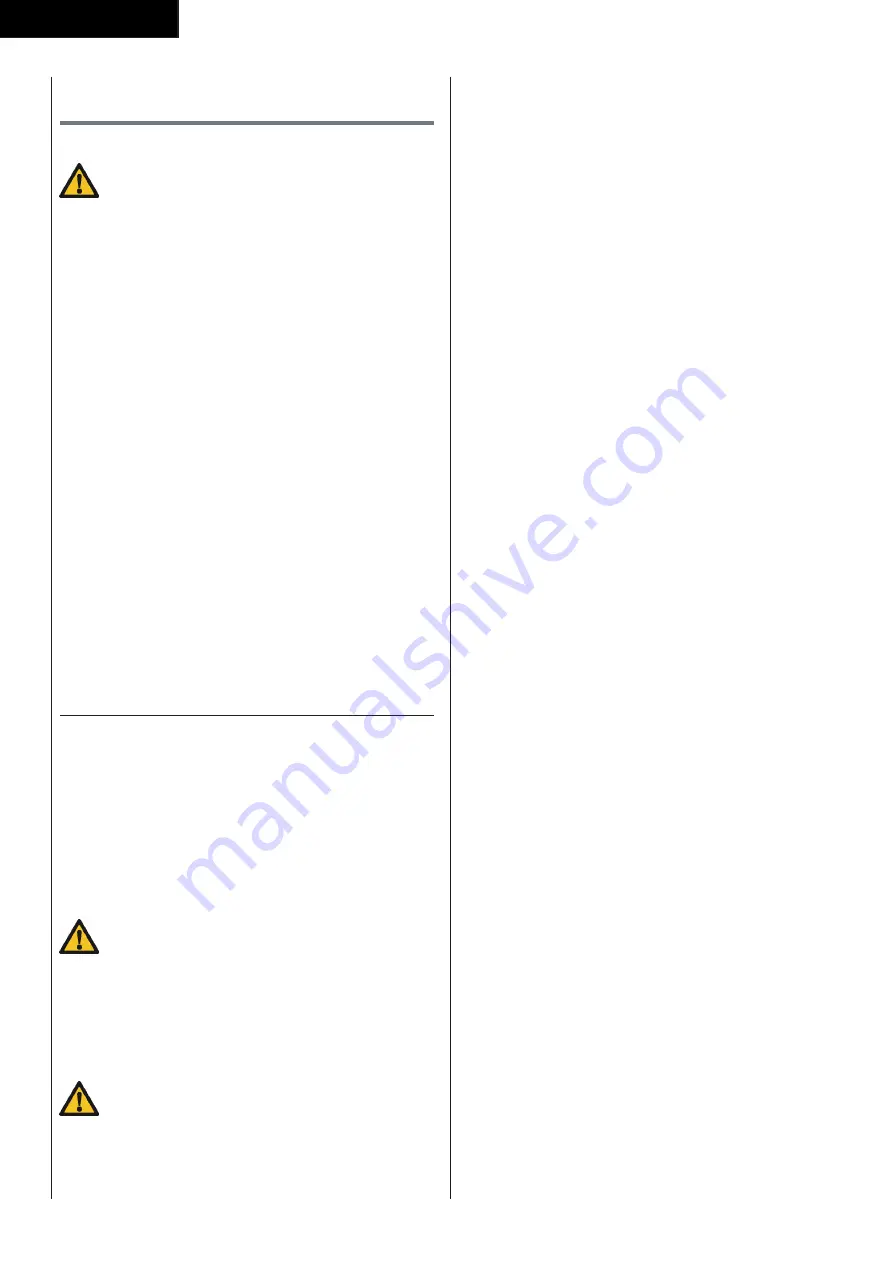
2 8
English
Cleaning and maintenance
WARNING
•
Before cleaning and maintenance, remove the
mains plug from the wall socket.
•
Do not use solvents to clean the equipment.
-
Do not block the ventilation openings. Keep the
ventilation openings clear from dust, dirt and other
obstructions.
-
Clean the equipment with a soft, absorbent cloth
after each use.
-
Clean the visible parts of the equipment with a
vacuum cleaner with a small suction nozzle
-
Regularly check that all screws and nuts are tight.
Belt and Running Deck
Your treadmill uses a very high-efficient low-friction
bed. Performance is maximized when the running deck
is kept as clean as possible. Use a soft, damp cloth or
paper towel to wipe the edge of the belt and the area
between the belt edge and frame. Also reach as far as
practical directly under the belt edge. This should be
done once a month to extend belt and running deck
life. Use water only - no cleaners or abrasives. A mild
soap and water solution along with a nylon scrub brush
will clean the top of the textured belt. Allow the belt to
dry before using.
Lubrication (fig. F-4)
The running belt must be checked for lubrication
condition regularly. Therefore the treadmill comes with
a 300 hours reminder function. The “TIME WINDOW”
will display “OIL” and will make an acoustic beeping
sound every 10 seconds to remind you. Follow the
below checking procedure and eliminate the “OIL”
message and acoustic warning signal by pressing and
hold the “STOP” button for at least 3 seconds during
this warning signal.
CAUTION
• We recommend to check the running belt
lubrication at least once every month, as more
factors than time can be effective to the lubricant
conditions.
•
Only lubricate the running belt if necessary. If
you apply too much lubricant, the running belt
will slip easily due to lack of friction.
WARNING
•
Before lubrication, remove the mains plug from
the wall socket.
-
Stand steadily on the running belt.
-
Take hold of the front handlebar and push the
running belt with your feet so that it slides back and
forth. The running belt must move smoothly and
evenly without making sound.
-
If the running belt does not move smoothly and
evenly or if the running belt does not move at all,
touch the underside of the running belt with your
fingertips to check the lubrication:
• If you feel lubrication or your fingertips are shiny,
there is sufficient lubrication on the running belt.
• If you do not feel lubrication or your fingertips
are dusty or rough, apply lubricant (15-20 ml)
in the middle of the running deck under the
running belt and let the equipment operate at
5km/h for at least 5 minutes.
•
After lubrication, do not fold the equipment
before having done a workout for 20 minutes
with a speed of at least 5 km/h. The lubricant will
be spread evenly over the running belt.
Belt Dust
This occurs during normal break-in or until the belt
stabilizes. Wiping excess off with a damp cloth will
minimize build-up.
General Cleaning
Dirt, dust, and pet hair can block air inlets and
accumulate on the running belt. On a monthly basis:
vacuum underneath your treadmill to prevent buildup.
Twice a year, you should remove the black motor hood
and vacuum out dirt that may accumulate.
UNPLUG POWER CORD BEFORE THIS TASK.
Belt adjustments
Adjustment must be made from the rear roller. The
adjustment bolts are located at the end of the step rails
in the end caps.
-
Tighten the rear roller bolts (clockwise) only enough
to prevent slippage at the front roller. Turn both
running belt tension adjustment bolts in increments
of 1/4 turn each and inspect for proper tension by
walking on the belt at a low speed, making sure the
belt does not slip. Keep tensioning the bolts until
the belt stops slipping.
-
If you feel the belt is tight enough, but it still slips,
the problem may be a loose Motor drive belt under
the front cover.
-
Do Not Over-tighten
Over tightening will cause belt damage and
premature bearing failure.
Running belt tracking adjustment
The performance of your treadmill is dependent on
the frame running on a reasonably level surface. If
the frame is not level, the front and back roller cannot
run parallel, and constant belt adjustment may be
necessary.
Summary of Contents for FitRun 70i
Page 2: ......
Page 3: ...3 RunFit 70i A...
Page 4: ...4 RunFit 70i B A C05 C06 C14 C15 B01 D07 B...
Page 11: ...1 1 RunFit 70i D 6 A07 P...
Page 14: ...1 4 RunFit 70i E 1 E 2 A B...
Page 15: ...1 5 RunFit 70i F 1 F 2 F E F...
Page 16: ...1 6 RunFit 70i F 3 F 4 F D D07 B P F...
Page 17: ...1 7 RunFit 70i F 5 F 6...
Page 18: ...1 8 RunFit 70i F 7A F 7B...
Page 71: ......
















































